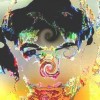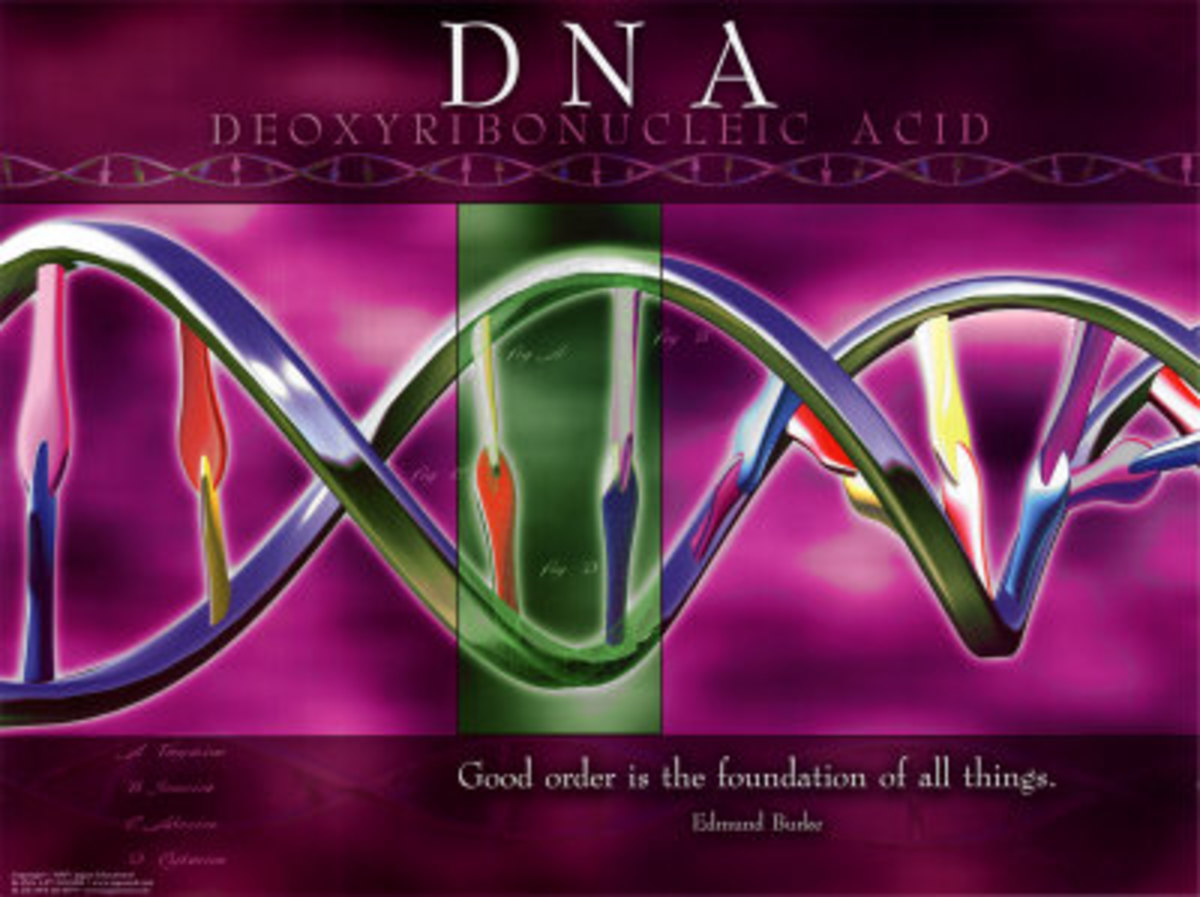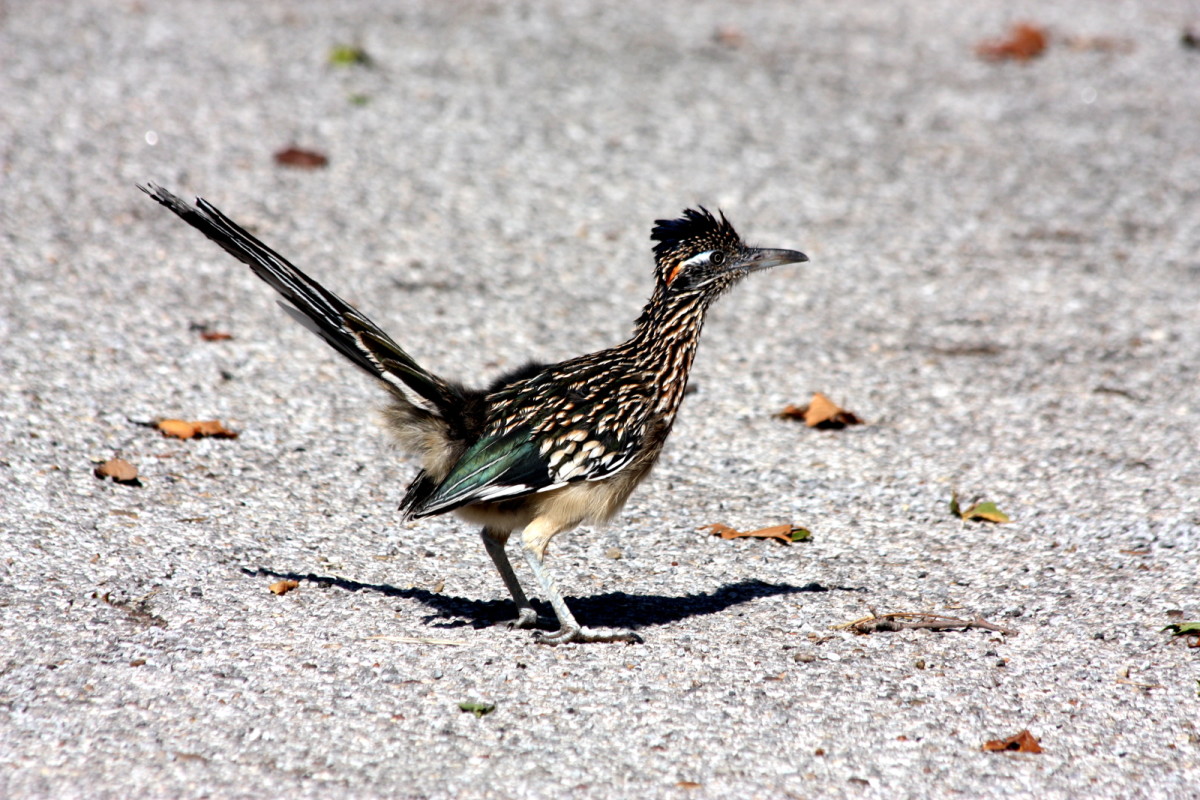The Nature of Change, Part 2
Continuing with a series of reflections written in 2007-2008 (following part 1)...
Inside-out
Addictions like all things develop into existence.
Although I have a familial predisposition to alcoholism, I didn’t become an alcoholic after my first drink or even after my first binge—drunken revelry didn’t leave me wanting to drink the next day. In the beginning there was no physiological craving. Of course, I did seek socially acceptable opportunities to tie one on, because I quite enjoyed the party. So, all the components of the cycle were in place from the get-go; it just needed feeding to grow. And feed it I did.
At first, it was just the occasional weekend. Like the high-school dances with a bottle of red shared between 2 or 3 friends. In college drinking parties and bars became a regular weekend ritual (at first), and after not too long, the weekends stretched further and further into the week. I guess they call that binge drinking, and apparently it’s still the rage at colleges and universities. By the time I graduated I drank at least three of four beers every night.
That ritual continued for over two decades, escalating gradually. Eventually beer wasn’t enough, and I would start the evening with whiskey, before tapering off. While I didn’t get wasted every night (despite consuming several drinks—the fact it didn’t get me drunk attests to my alcoholic tolerance), I did quite frequently, and usually woke up the next day regretting it.
The signature of addiction is quite distinct: you see it when you become cognizant of the fact that your behavior controls you, and not the other way around. I saw that writing on the wall many years ago. But I chose to ignore the signs, because drinking had big benefits. It was self-medication for stress and an escape from my demons. It helped me focus on the present, to stop worrying about making mistakes and future uncertainties. Those are good things, especially for an obsessive like me.
But I didn’t like being addicted; I didn’t like what it was doing to my body. But when you lose control of your behavior, it’s not so easy to change just because you want to.
Behavior (and for that matter, psychology) is, to a large degree, driven by physiology. And the physiology of an addict is a mature developmental product of the habitual cycle of self-medication.
For me, it goes like this:
I get up in the morning and begin drinking coffee. That’s another addiction. The caffeine is a jump start on the day, and the first cup brings on a happy feeling. I’m guessing that comes from release of serotonin, the neurotransmitter of happiness. Of course, I like that feeling, and strive to augment it by having another cup.
After two or three cups I notice that I’m not getting any happier. But I’m feeling pretty good as I begin the day’s work.
Later in the day I start to lose the happy feeling, so I stoke myself with some more caffeine. It helps a little, but it’s nothing like the morning buzz. I notice something else: I feel a buildup of tension, tightness in my back and neck, a clenching of my jaws. I find it hard to relax. The happy feeling has changed as well: now it’s more manic, out of control. I find it hard to sit still.
And then the work day ends and it’s time to relax: it’s ‘Miller time’. The alcohol calls to me, and that first drink fills me again with a feeling of happiness and well-being. More serotonin, but now mixed with the sedating effects of alcohol. With the first swallow I feel the tension loosening in my neck. How much of that is psychosomatic, I don’t know. Whatever the underlying physiology, after my first drink I am beginning to feel relaxed and happy, but also and an even stronger urge to augment that feeling with another drink. And then another. And another....
Sometimes I get by on one or two drinks, but then I have to tear myself away from the strong desire to have another. Eating helps. In fact, eating shortly after I get home from work seems to strongly dampen the desire to imbibe. So, I’m guessing that part of the happy rush I get from the alcohol comes from the calories.
More often than not one or two drinks will lead to three or four, or even more. If I start with whiskey it doesn’t take long to down three or four drinks. At that point all I want is to have is another, but I will taper off by switching to beer. I might then have three or four of those before I’m done for the day.
I’m a happy drunk—I tend to get silly and laugh a lot, like the movie character Arthur played by Dudley Moore. For the most part that hasn’t been much of a social problem, although I have my share of embarrassing stories from my younger days (some of them told to me—I didn’t remember them myself). Fewer and fewer as the years went by however: my body became adapted to the alcohol, and I thus became able to ‘hold my drink’.
The biggest problem, or at least the biggest immediate problem, is the acute toxicity, the hangover. Alcohol is, after all, a poison. And if I have 6-8 drinks in an evening, the next morning I feel like shit. No energy, detached from reality. It’s not so much a headache, usually—I’ve learned over the years that the prophylactic for that is to drink a few glasses of water before bed. But the other effects are just as bad.
Particularly the depression. Even coffee doesn’t cure that, though it helps. But I suspect that the problem is that on the morning after, my serotonin stores are somewhat depleted, making that happy feeling hard to get. So, my mood for the first part of the day is less than cheery.
Generally, things start to pick up by early or mid afternoon, and by evening I feel pretty good and find myself craving another shot. And if I succumb (as I so often do), I start feeling good, and seek to augment that feeling with another...and another.... And the cycle repeats.
It’s been over two weeks now since I broke the cycle. I still have a craving when I get home from work, but it has receded, a flicker that is easy to tamp out with a little food. I suppose my addiction has not progressed as far as it does in some alcoholics—for me the withdrawal symptoms have been minor. Beyond the anxiety that comes from the daily internal battle, which comes and goes, there has been no pain. For that I am thankful.
But the transition is far from over, and may never be. There are times when I try to convince myself that I have conquered the addiction; that it’s okay to go back to drinking alcohol, but with a little more control this time. As time goes by, that voice gets more and more seductive. But I also know from experience that it’s a liar. The cycle has receded, but it’s still there, and will quickly grow back into a monster with just a little feeding. It’s best to starve it.
Outside-in
When I was a boy my greatest fantasy was to travel back in time. I especially wanted to visit the Mesozoic to see some dinosaurs.
I still like to indulge that fantasy, and over the years I have developed a time machine that will take me there and beyond. All I have to do is hitch my imagination to the facts of history and geology, biology and chemistry, and away I go: down to the genealogical roots of my family tree.
I begin by recalling my own memories. Things have changed quite a bit over the past 48 years, and not in ways I would have predicted when I when I was a boy. The new millennium is well underway, and we haven’t colonized the moon or launched any manned spacecraft to the outer reaches of the solar system, as envisioned by Arthur C. Clarke in 2001: a Space Odyssey. Cyberspace, on the other hand, has developed apace. When I finished graduate school in 1990, the World-Wide-Web didn’t exist, and the internet was something that was only used by professional computer geeks. That was less than twenty years ago.
Twenty five years ago I was still using a typewriter, and personal computers, which ran on ‘floppy disks’ with a few kilobytes of storage space, were a novelty used mainly by businesses.
I remember when gasoline cost less than thirty cents a gallon. Now, thirty some odd years later it is more than three dollars a gallon. Of course, when adjusted for inflation, that is still damn cheap. I expect that’s about to change though.
When I was a boy, cars were massive metallic monsters without airbags, seat belts were considered optional, child car seats were largely unheard of, and no one wore helmets when riding a bike.
I continue my journey by recollecting stories of my grandparents, like the one my grandpa told of his first job as a teenager in the 1920s, as an ice deliveryman. Every day he would load up his truck with blocks of ice for distribution around the neighborhood, to be used in iceboxes. This was before electric refrigerators and freezers. It was also before television.
My great grandmother began her life at the dawn of the age of electricity, before there were airplanes or cars, and most roads were dirt, not paved. She lived to be a hundred, and must have seen as much change in her lifetime as anyone who has ever lived. I now wish that I had thought to ask her whether she thought it was for the better. I expect she would say yes, at least in many respects. Among other things, the polio that had afflicted her, and many of her generation, has been largely eradicated.
Eventually my time machine reaches the limit of familial memories; to travel deeper into my family tree I have to use the map of history to navigate. I also have to choose which branches to trace: maternal or paternal? Alternating (paternal-maternal-paternal-etc.)? The fact is that good genealogical records have not been kept by either side, so I decide to bypass the problem, and travel from node to node, visiting only ancestors that both sides have in common.
Since I have a long way to go to my final destination, I hit the time-warp accelerator, and fly past the beginning of the Industrial Revolution, past the Enlightenment, the Renaissance, the Middle Ages, the Dark Ages. I fly past Roman and Greek Antiquity, past the dawn of Civilization in ancient Mesopotomia some five thousand years back. I note in passing that I am now traversing a period that Julian Jaynes says predates human consciousness, which he defines as an internal, language-based narrative that models reality metaphorically. At this early time in human history humans didn't have this capacity; instead, they followed commands that originated in one hemisphere of their bicameral minds, commands that were perceived as external voices by the other hemisphere, as occurs in schizophrenics (now a minor fraction of the population) to this day. At this early time in human history this ‘schizophrenic’ (bicameral) condition wasn’t pathological, because it was the norm and accommodated by social structures that had developed around it. I wonder why Jaynes’ theory, which makes a lot of sense to me (it explains the origin and development of religion quite plausibly, for example) has received so little attention. Big ideas that contradict conventional wisdom are quite often ignored, even when they are right. Of course, crackpot, wrong ideas that contradict conventional wisdom are also usually (and thankfully) ignored. But perhaps you have to be a bit of a crackpot to come up with part of the truth that is outrageous enough to change conventional wisdom. Before Einstein, how many people would have thought of time as relative and space as curved, or for that matter, that space and time are really the same thing? How many Einstein’s have fallen through the cracks of history, dismissed as loonies, simply because their peers lacked the capacity to understand?
Finally my time machine enters the uncharted territories of pre-history. To venture further, I have to navigate using clues I am able to gather by observation of the terrain. Actually, I’m not flying entirely by the seat of my pants; I do have some instruments, including a portable DNA sequencer. Here’s where the journey really gets fun.
I journey a million years back into Africa, where I encounter Eve, the mother of all humanity. She is naked and black-skinned, and the matriarchal leader of her small, isolated clan.
Following Eve’s genealogy further into the prehistoric past, I encounter ancestors that aren’t quite human; while they walk upright, they are small and have ape-like features. Nonetheless, my porta-sequencer confirms that that their DNA sequence is remarkably similar to mine in many respects. Next I come to a time when there were no humans, only apes (although not quite like modern apes). Among them is an ancestor of mine, which is hard to believe, because he’s a hairy beast who doesn’t seem to have either my looks or brains; nonetheless, he has a remarkably similar DNA sequence. Of course, this fellow is also the ancestor of modern day chimpanzees, and the DNA sequence of modern chimps also shows many similarities to that of this prehistoric ape. Come to think of it, my DNA sequence is 98% identical to that of chimps, reflecting the fact that we are distant cousins.
I continue my trek back through the generations. A million or so generations ago I find a lemur-like ancestor who walked on four legs, who is an ancestor of all modern apes (including humans), monkeys, and prosimians. The DNA sequence of this animal is still remarkably similar to mine, especially in regions that code for protein structure, but there are some significant differences, including major rearrangements in large blocks of sequence. As I continue back through the generations, I encounter ancestors who look less and less like me, and whose DNA sequence diverges ever more from mine while maintaining significant blocks of identity. I come across small rodent-like ancestors that I have in common with mice, and eventually ancestors that I share with opossums. Here I note that I am now passing through the Mesozoic, so I pause to scope out some dinosaurs....
Of course, none of these magnificent beasts is an ancestor of mine; they are more like distant cousins many times removed. I drive my imaginatron further back in time, before the time of dinosaurs, where I eventually encounter a reptilian ancestor that I share with all the dinosaurs, including modern day birds.
No need to stop here. Continuing, I enter the sea and find the fish ancestor that I share with all vertebrates, and further back still, the bizarre spiny ancestor that I share with echinoderms such as sea stars and sea urchins. I have to go very far back indeed (almost a billion years) before I encounter the ancestor that I have in common with insects, but there it is—the tiny bottom feeder who is the great (x 109) grandmother of both me and that mosquito that’s been biting me. And amazingly enough, even after all that time there are still stretches of DNA sequence that are remarkably similar between me and that pesky mosquito, reflecting the fact that the sequence has been handed down, albeit with modification, from that ancient vermiform creature that begat the blood lines leading to both of us.
I have now come to the roots of my family tree, and here things get murky and hard to trace. I find that at this early stage in the development of multicellular life there is a huge amount of diversity. It’s not so easy to identify clear-cut ‘species’. It makes me question the uniformitarian assumption of Darwin and his mentor Charles Lyell: that processes in the past must have operated in the same way that they do now. That certainly doesn’t seem to be quite the case at this time at the dawn of modern life. While the tiny sea creatures that I encounter are multicellular, many of them lack key DNA sequence motifs that I found in all of the ancestors that I encountered on my journey up to this point. Eventually I find cells that contain DNA signatures that identify them as my ancestors among the sponge-like animals that populate the ocean floor.
I realize that I have come to a point in time where my genetic heritage is no longer transmitted by multicellular animals, but rather only at the level of single cells. The multicellular creatures I encounter in this primordial era are more like loosely knit colonies than highly integrated organisms.
Further back, I finally come to a vast stretch of time when all life is unicellular. Among the wildly diverse assortment of holozoans I find cells that look like the flagellated collar cells, or ‘choanocytes’, of sponges. While I am unable to locate many of the key signatures of my multicellular ancestry in the DNA sequence of these ‘choanoflagellates’, they do have some of them, and overall their sequences are more similar to mine than are any of the other cells that I sample, so I can infer that they are likely to be my lineal ancestors.
To go all the way down to the very tips of my family tree’s roots, I have to push the time-warp accelerator to the floor, because the temporal expanse ahead is many times longer than that which I have thus far traversed. I bypass long millennia dominated by unicellular marine ecosystems. I note that the oxygen levels are much lower than they are in my own time. Slowing down to sample the fauna, I find populations of cells that are very different from those that I am familiar with. Some are relatively large, like the ‘eukaryotic’ (nucleated) cells that populate the world today, and others are relatively small, the size of modern day bacteria. I witness the engulfment of small cells by the larger ones by a process of ‘phagocytosis’. In some cases however, the small cells are not digested, but remain intact within the larger ones. Taking a sample of some of these, I find that traces of my ancestral DNA sequences within both the nucleus of the large cell, and within the small cells that they have engulfed; I realize that I am witnessing the beginnings of the symbiotic relationship that continues to this day between mitochondria—the descendents of these small, bacteria-like cells—and all eukaryotic life, including myself.
I come a time when I can no longer trace my ancestry with confidence. Life at this early stage of its development is almost unrecognizable. The distinction between life and non-life is not so clear-cut. There are membrane-bound, cell-like assemblages of molecules that execute a sort of metabolism, degrading high energy carbohydrates and using the released energy to build structure, but unlike modern cells they don’t reproduce identical copies of themselves—in fact, they lack DNA, the molecule that records the program or ‘instructions’ for such reproduction. Most do contain RNA however, and reproduce by budding off various modified versions of themselves. Sifting through the protocells in this soup I find some that contain both DNA and RNA, and I realize that this may well be an ‘ancestor’.
Finally I arrive at the primordial time when there are no cells, and thus, no life. Nonetheless, there is a chemical ecology that is bursting with potential, poised to generate the first proto-cells. Sampling the chemical milieu with my portable chromatograph I identify all the components of the citric acid cycle, the core of oxidative metabolism that provides the energy and building blocks for all life. However, the direction of the cycle’s flow is backwards—rather than being oxidative, it is reductive, since there is little oxygen. Instead of being a degradative sink for the destruction of macromolecules, this autocatalytic cycle is a wellspring of macromolecular assembly, the pre-biotic fountainhead of life on earth.
So now I have come to the end of my journey into the roots of the tree of life. I could go further, way back in time to explore the infancy of the solar system, the galaxy, the universe. But my imaginatron is running low on fuel and I am tired, so I’ll leave that journey for another day.








